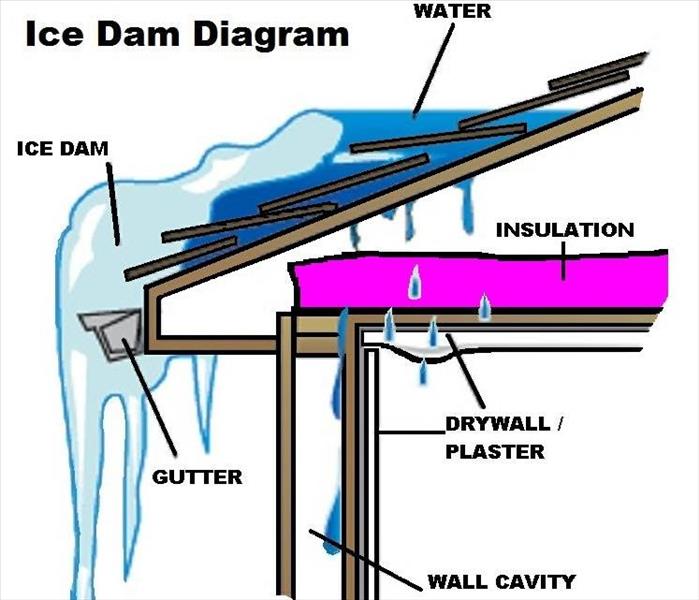Winter Ice Dams: Cause, Effects, and Prevention
1/25/2016 (Permalink)

What Causes Ice Dams?
Ice dams form when melting ice and snow refreeze above the eaves of your roof and subsequent melting backs up under the shingles. This causes interior leaks and water damage to interior walls and ceilings.
Preventing Ice Dams
Proper ventilation, drainage and insulation are the only ways to prevent ice dams and can be achieved in the following ways:
- Make sure your gutters are clear of leaves and debris
- Check and seal places where warm air could leak from your house to the attic: vent pipes, exhaust fans, chimneys, attic hatches and light fixtures are all possibilities
- Inspect, or have your roof and attic inspected for proper ventilation and insulation
- Look for signs of inadequate ventilation: rust spots, rusty nails or a mildew smell are all signals that moisture has formed on the inside of your roof
- If you have soffit vents in your eaves, make sure they are not blocked and insulation surrounding them is secured so that air can flow easily
- Keep snow from accumulating on the lower three to six feet of your roof
Additional Steps
- Install snow and ice slides to prevent ice and snow from "bonding" to the lower roof
- Install a rubberized ice and water shield beneath the roof shingles for the first three to six feet from the eaves up
- Install heating cable along the eaves to melt ice
Removing Ice Dams
- Consult a roofing professional
- Do not use a snow blower, shovel or blowtorch to try to chip, break or melt ice dams





 24/7 Emergency Service
24/7 Emergency Service
